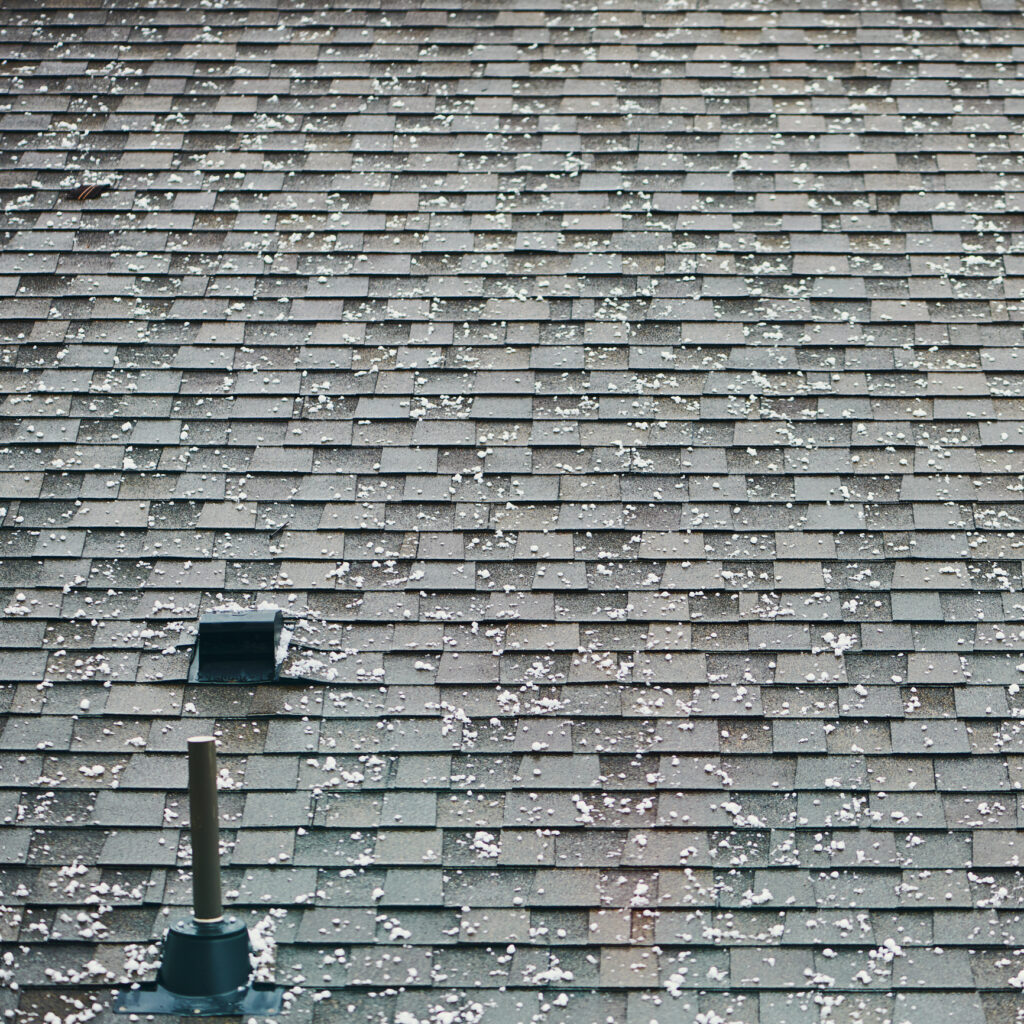Do You Need Hail Damage Repair? Here Are The Signs
Your roof takes a lot of damage from all sides when it comes to the weather. High winds, rain, and more all take their toll. One thing that you need to look out for is hail damage. When you get hail, you’ll find that your roof can take a beating from them. What does it look like when your roof gets hail damage, and what should you know about hail damage repair?
The Signs of Hail Damage
After any hail storm, you’ll want to go outside and look at your roof as soon as possible. If there is any damage, getting it solved quickly is key. Here’s what you’ll need to know to look for.
Bruising: Hailstone bruising is when a hailstone hits a shingle hard enough to leave a dent or mark. It may not crack entirely, but that dent has still left damage. The shingle will no longer be in optimal condition, so you’re more likely to see leaks or other roof damage.
Granule loss: The granule layer on your roof has an important function, protecting the roof from UV light damage and the elements in general. Over time you will see some granule loss, but hailstones can hasten that damage. When you check your roof, if you see any sections that look bare, the granules may have been knocked off or washed away. That will have to be handled quickly to prevent further damage.
Cracked or broken tiles: Depending on the hailstones’ size or severity, they can crack your shingles. Look for any shingles that have been cracked, broken or knocked loose. If you see any, you’ll want to have them repaired as soon as possible to again prevent further damage.
Missing shingles: It could be that the hailstones were bad enough to fully knock loose shingles on your roof. Check for any spots where shingles are missing, and replace them as soon as possible to ensure your roof stays waterproof.
How Hailstones Affect Your Roof
Hailstones aren’t always the same size, so the impact they have on your roof can vary a lot. That’s something you want to keep in mind if you want to keep it in good condition. Smaller hailstones won’t have as much density, do the wind can carry them quickly. That gives them a rapid impact when they hit your roof. Meanwhile, larger hailstones can reach the size of a softball, and that’s when they can really do damage to your roof. They will fall directly from clouds as they’re heavier, so they have a bigger impact on your roof.
The shape of the hailstones will affect your roof, too. While you’d expect them to have a smoother surface, like a snowball, they are crystallized. That means they have a lot more rough edges, leading to scratches and other damage to your shingles. Finally, consider the wind speed and direction of a hailstorm in your area. A hailstorm can carry hailstones at anywhere from 44 to 72mph. At those speeds, a large hailstorm can do some serious damage.
How To Inspect Your Roof For Damage
Once the storm has passed, you’ll want to inspect your roof to ensure it’s still in good condition. Wait until the storm has passed, and then head out to look. Remember, safety should always come first. You should stay on the ground to inspect your roof visually. Typically, you should be able to see everything from the ground and get repairs booked in if necessary. You can also use a pair of binoculars to get a good look, should you want to.
It’s also a good idea to get into your attic and look at the roof from the inside. It’s often easier to see where shingles are broken or missing as the light shines through. Plus, you can take a look for any other issues while you’re there, such as wood rot in the timbers.
What Happens Next
Once you’ve had a hailstorm and you’ve spotted damage on your roof, what happens next? The important thing is that you call on a contractor to handle the damage as soon as possible.
If the damage is left, that leaves your roof vulnerable to the next rainstorm or hailstorm that comes through. When there are gaps in your roof’s armor, that’s going to make it easier for water to get in and start wreaking havoc. For example, it can lead to rot in the timbers or water leaks in your home.
That damage adds up fast, so you want to stop it. Not only will you stop the damage from happening, but you’ll also have a much cheaper repair bill when you’re simply replacing some shingles.
Hail Damage Repair
Now you’ve identified the damage, you’ll want to call out a trusted contractor to help you put the damage right. It’s always better to have a contractor handle it, as they will be able to identify what needs to be done to get your roof back into top shape. You need to call the contractors as soon as possible, as time will be of the essence here. The sooner it’s replaced, the sooner your roof will be in good condition again.
In some cases, if the damage is severe enough, you may need to have your roof replaced entirely. That will depend on several factors, such as the roof’s age, and your contractor will be able to advise you on this. You will also find that your insurance company can help you cover the cost of those repairs, but it’s important that you submit that claim quickly.
Hailstones can do a real number on your roof, but if you’re quick about inspecting it and booking repairs, the damage should only be minimal. Take a good look after a hailstorm, and ensure that you’re getting help as soon as you need it.


